YouTube Influencer Marketing: Definitive Guide [/w Examples]
YouTube content and the influencers standing behind it have become an inseparable part of our lives. Some people follow YouTubers that post content related to their profession, while others get fashion and makeup inspiration from their favorite creators.
But we are here to discuss the “behind the scenes” of YouTube videos and understand how you, the digital marketer, can use the power of influencers to reach your marketing goals.
What is a YouTube Influencer?
A YouTube influencer (AKA YouTuber) is someone who creates and posts content on YouTube on a specific topic and has gathered subscribers and followers who constantly consume this content. What sets ordinary YouTubers apart from influencers is that influencers position themselves as experts in their niche.
Let’s illustrate this point by sharing an example of a real YouTube influencer.
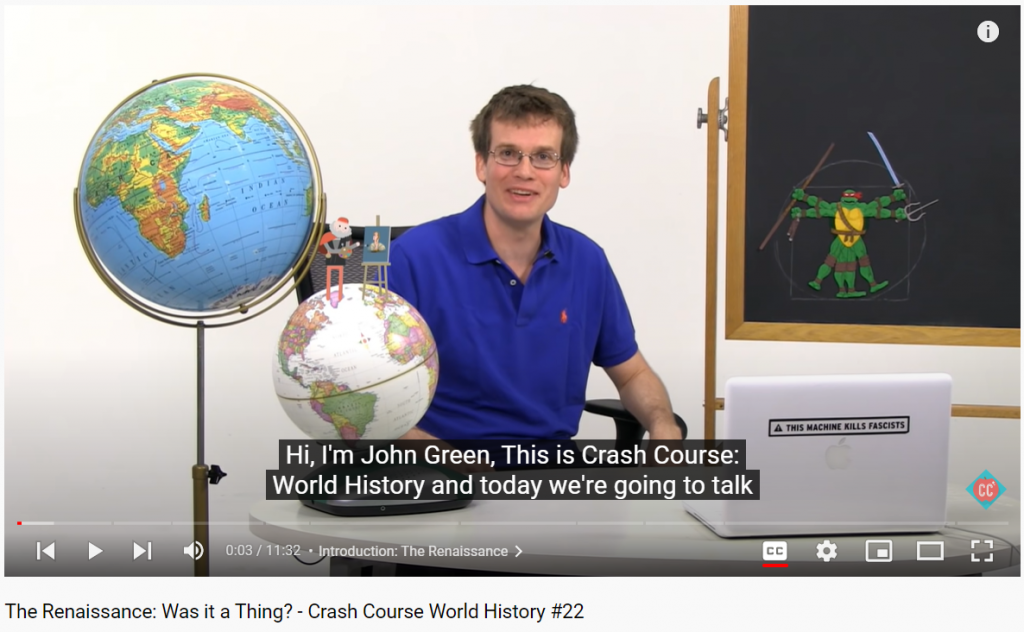
The person in the video is influencer John Green with his popular channel Crash Course with 13.5 million followers.
Crash Course posts compelling content about different subjects, such as science, psychology, and others. John’s subject is world history, and Crash Course subscribers consider him an authority in this niche.
With the definition of YouTube influencers clear, let us understand the value they can add to your marketing campaigns.
Is YouTube Influencer Marketing Effective?
The short answer is Yes, influencer marketing on YouTube is a highly-effective strategy for reaching your digital marketing goals.
For the long answer, let us first share a couple of statistics to further prove the effectiveness of this digital marketing tactic:
- Internet users tend to trust influencers more, especially the younger generation. Around 60% of millennials prefer to trust the opinion of an influencer rather than a celebrity or traditional media personality.
- Influencers can affect the buying decisions of their followers. Based on Rakuten Marketing research, among all consumers surveyed, 80% have made a purchase based on an influencer recommendation.
In case you are wondering why influencers marketing is so effective, there are a couple of main factors that explain it:
Authority: Unlike celebrities who are not domain experts of the products they promote (e.g., Kim Kardashian advertising PicsArt, a photo editing tool), influencers usually have considerable knowledge and expertise in their niche. Thus, viewers are more likely to trust the opinions of influencers as “they know what they are talking about”.
Trust: Influencers tend to pay lots of attention to the authenticity of their content. For instance, product review channels will both praise and criticize the products they are evaluating. They will also do their best to avoid biased opinions to make sure that their viewers have an objective opinion about the given product.
Engagement: Compared to celebrities, the number of followers for YouTube influencers is usually (not always) smaller, which leads to a better engagement (especially for the smaller influencers who can get 4X the engagement of celebrities).
Another factor helping with engagement rate is that people following a niche influencer are likely to be interested in that niche and actively participate in conversations.
Therefore, YouTube influencer marketing is a highly-effective strategy worth adding to your marketing funnel and using along with social media channels (posts, reels, etc.), SEO (search engine optimization), content marketing (case studies, FAQs, long-form guides, podcasts, etc.) and other channels.
But before implementing anything, let us understand how everything works with YouTube influencer marketing.
How Does YouTube Influencer Marketing Work?
YouTube has become the modern alternative to television for young audiences. With the format of its content and the way people consume it, YouTube stands somewhere between classic television and social networks (also check out our guide on social media marketing).
Unlike videos on social media platforms (e.g., TikTok) that are short and appear in portrait orientation, YouTube’s videos are in landscape orientation with longer video length and more in-depth and detailed content. You usually subscribe to a channel to receive notifications about their new video uploads on YouTube.
As a video platform, YouTube relies on advertising and paid promotions just like any other media provider.
In the case of YouTube, it has two main popular types of advertising:
- Banner ads that YouTube places on the bottom part of the video.
- Video ads that appear in the beginning or somewhere in the middle of the video.
When these ads appear on the video of a YouTube creator, they will receive a portion of the money YouTube received from the advertisers for showing these ads.
But there is a significant problem with this method, as YouTube viewers generally frown upon these ads since they disturb their viewing experience. Moreover, they have developed ad blindness towards both YouTube banners and video ads.
Consequently, with less effective ads, content creators will have to face the reality of lower ad revenues too.
Luckily, ads are not the only way creators earn on YouTube. The other option is to directly collaborate with brands and naturally embed product promotions of these brands into video content.
Thanks to the authority, trust, and engagement we mentioned earlier, these natural forms of promotion are much more effective and let creators earn better commissions.
Another specificity of influencer marketing, compared to YouTube native ads, is that there are no predefined formats and limitations for influencer marketing campaigns. Brands and influencers can agree on any collaboration format, including:
- Timing and frequency: brands might want a product mentioned in a single video or a year-long collaboration.
- Payment: as a payment for their promotion, influencers might ask for the brand’s products as gifts, monetary compensation, or both.
- Creative freedom: brands and influencers can agree on either strictly following brand guidelines or leaving more room for influencers’ creativity.
Unlike YouTube ads, influencers and brands do not have limitations in terms of promotion formats too. Up next, we will share several common formats of influencer campaigns for your consideration.
6 Types of YouTube Influencer Marketing Campaigns
As already mentioned, there are no format limitations for influencer marketing campaigns. Thus, both influencers and brands can enjoy an incredible level of creative freedom. The sky is the limit.
However, based on many trials and errors, online marketing experts who work with influencers have come up with several formats and tactics that perform the best.
Our compilation of influencer marketing campaign types includes six of them.
Type #1: Brand awareness campaigns
YouTube videos can be a great place for running your brand awareness campaigns.
These campaigns aim to increase the knowledge and trust in your brand and products among your target demographics rather than generate sales or potential customer leads.
What is great about brand awareness activities with influencers is the highly relevant and engaged audience that you are getting access to. This will work, of course, assuming that you have analyzed your influencers and picked the ones whose followers match your target audience.
As an example of a brand awareness campaign with an influencer, let us look at the case of Jacksfilms and Audible.

The channel in question belongs to Jack Douglass, with 4.7 million followers. He makes content about everything from parodies to music videos. One of his videos was about answering his followers’ questions, and this is where we started talking about Audible – an online audiobook streaming service that was his brand partner.
Type #2: Contest campaigns
Influencer campaigns are about the authentic and natural incorporation of product promotion into the content.
Another viable way of doing this is via contests or giveaways where the main prize is usually a product from the brand the influencer is working with. Here’s an example from a video production channel.
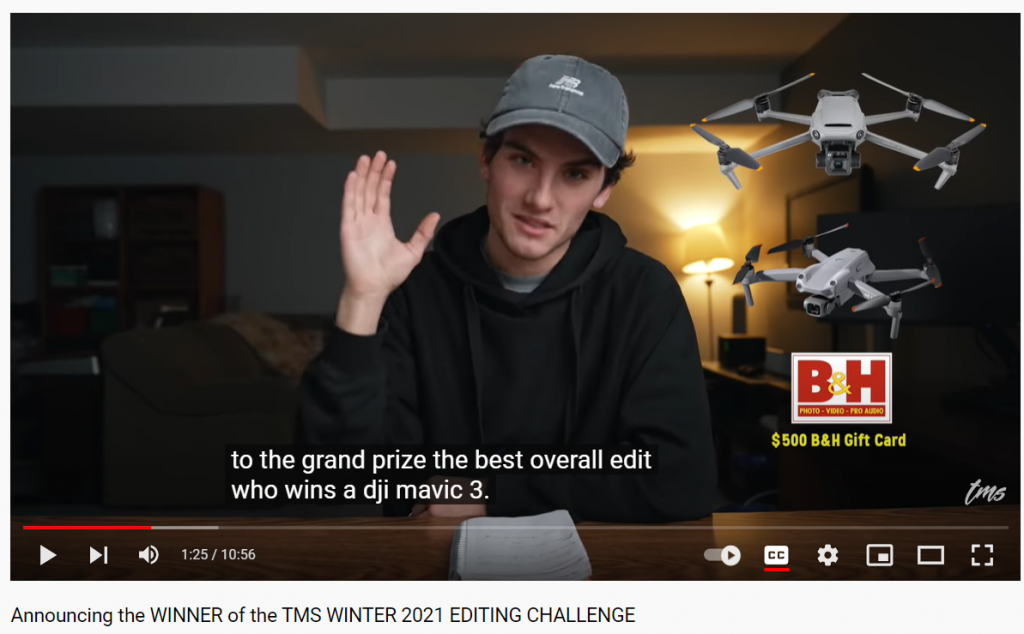
TMS Productions is a channel with 150k followers that creates content about video editing, movie making, and everything related to it, and the three influencers running this channel are Tommy, Mitchell, and Stephen. One of the staples of TMS productions is their annual video-making contest called TMS Editing Challenge, where they prompt viewers to create videos and submit them to the channel.
The best videos get a prize of B&H gift cards or DJI drones as TMS had a sponsorship agreement with both B&H and DJI.
Type #3: Product unboxing campaigns
Unboxing videos are exceptionally popular on YouTube, with over 45 million hours watched on mobile devices alone.
The term unboxing speaks for itself. These are the videos where influencers take brand new products out of their boxes, use them, and review both the packaging and the product itself.
Unboxing videos are also a great potential way to promote your products by sending a sample to your partner influencer and asking them to unbox and review it.
Let’s look at a sample unboxing video Sony has sponsored for its PlayStation 5 console.
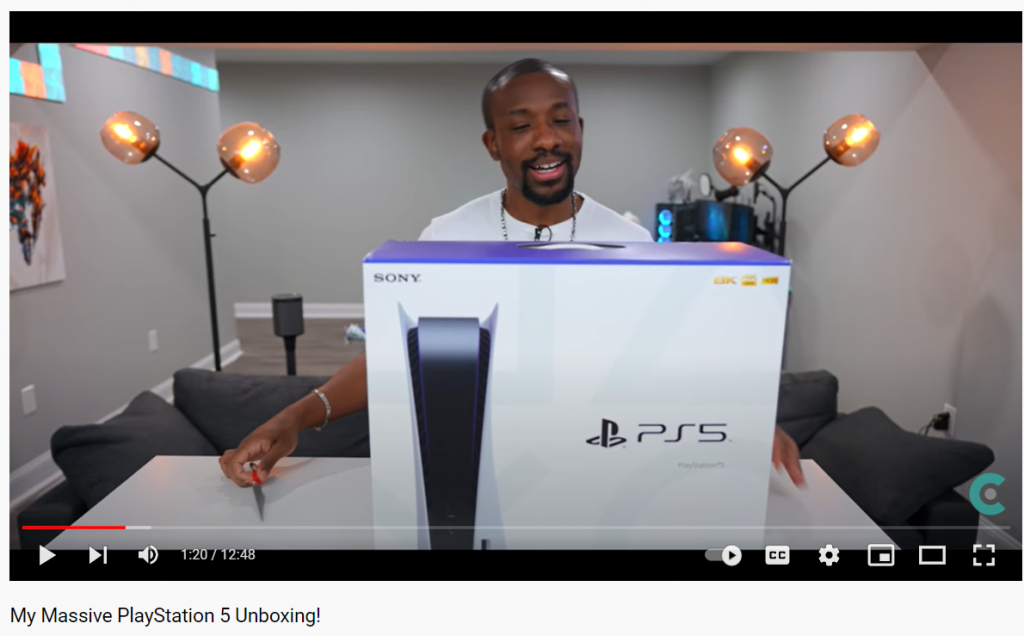
Here we have Judner Aura, the influencer who runs the channel UrAvgConsumer with 3.1 million subscribers. The channel reviews tech gadgets for home and personal use and runs occasional unboxing sprees. In this particular case, the unboxing was a partnership with Sony.
Type #4: Tutorials
Tutorial and how-to videos are another widespread type of content on YouTube.
These videos are especially popular and effective among influencers who are experts in their niche. The reason is that they have the necessary knowledge to post educational videos, while their audience actively consumes such content because of their trust in the influencer.
The great news is that you, the digital marketer, can take advantage of the popularity and effectiveness of these videos by asking the influencer to make a how-to video related to your product.
Here is an example of an influencer campaign that Samsung ran for its DeX desktop environment that transforms their smartphones into desktop computers.
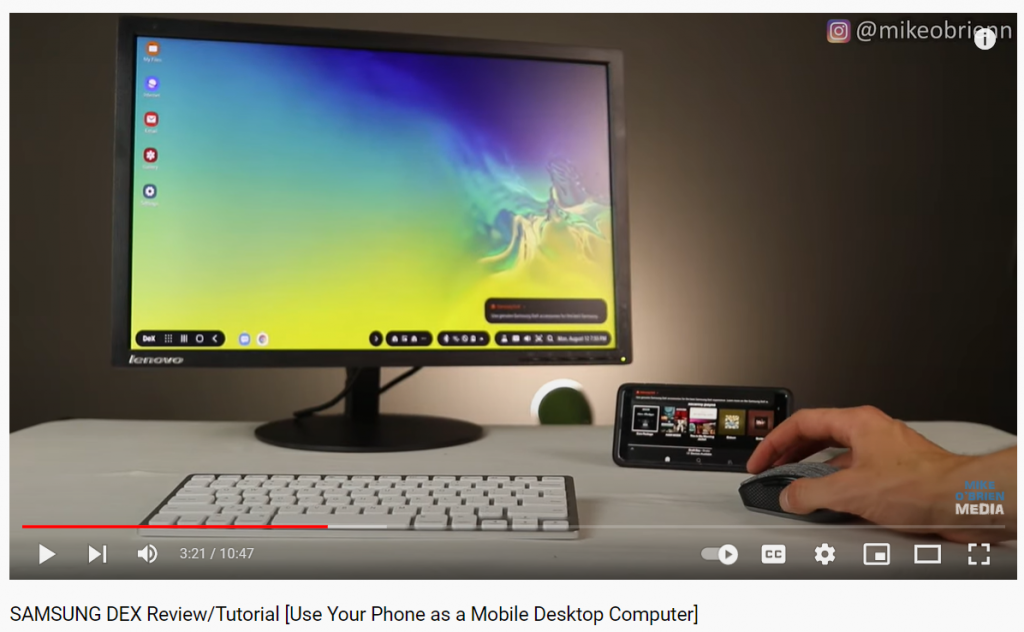
The host of this video is tech enthusiast Mike O’Brien with 340k subscribers, who has collaborated with Samsung to show off their DeX feature in a how-to tutorial.
Type #5: Vlogs
Vlogs are short for video blogs, a specific type of content on YouTube that shows the daily life, the experiences, or the opinions of the influencer behind it.
What makes vlogs great for marketing campaigns is the influencers’ ability to add your products into their videos in the form of product placements by showing their audience that they are personally using these products or services and like them.
The video by Casey Nesitat about Emirates airlines is an excellent example of such campaigns.

Casey Neistat is one of the most popular video bloggers out there, with 12.4 million subscribers. As part of his routine travels, he tried the first class of Emirates and made a video about it, showcasing all the luxuries the airline provides to its first class passengers.
The video was a result of a campaign that Emirates ran to promote its first class tickets.
Type #6: Hauls
Hauls are a subtype of unboxing videos where the influencer unboxes, uses, and reviews a large list of products, instead of one or a couple that is common for regular unboxings, that they bought in a shopping haul.
Like with the unboxing videos, digital marketers can partner up with influencers to include their products in these hauls.
Hauls are especially popular in the fashion industry, and our example is from there, too.
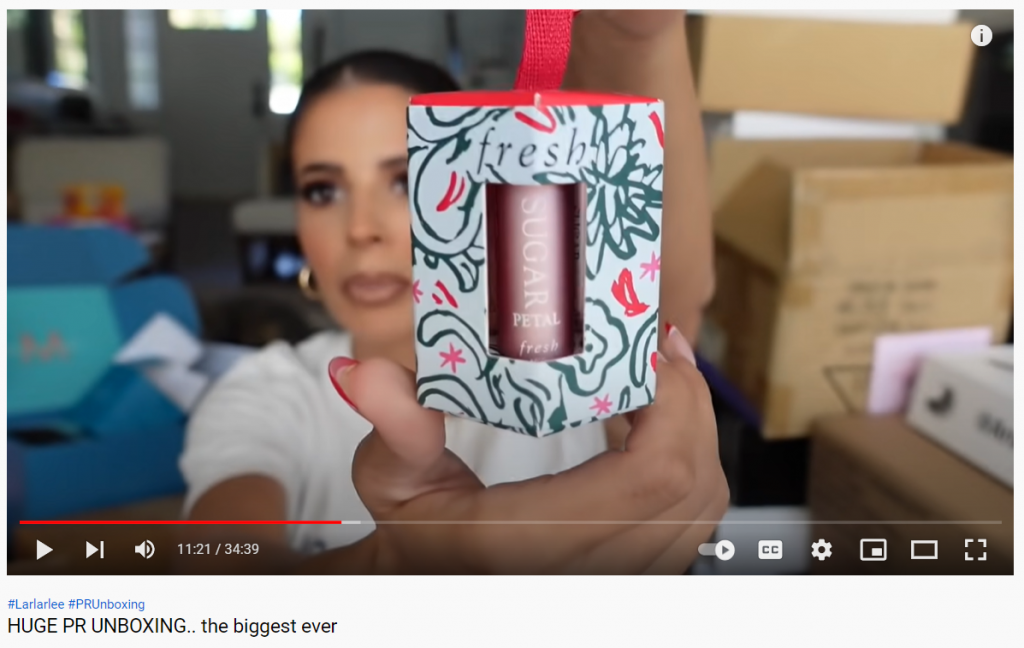
Laura Lee is a lifestyle and fashion influencer with 4.6 million subscribers on YouTube. Among many fashion-related videos, Laura also likes to do haul unboxings, the largest of which (the video above) included makeup products from lots of brands.
Although you and your influencers have endless options to do your product promotions, these six are quite popular and tested types of influencer campaigns that you can take into consideration.
Ok, great, you have an idea of what campaigns to run, but how can you find influencers for this? Our next section includes several methods to find the right YouTube influencers for your next campaign.
How to Find YouTube Influencers
Finding and collaborating with the right influencers is key to a successful influencer marketing campaign.
To make your search for influencers easy, here are three methods for you to consider:
- Search on Google and YouTube: Simply search for the type of content you are interested in (e.g. “camping”) or the influencer in that niche (e.g. “camping YouTubers”) and see which successful YouTube influencers are making them.
- Use an influencer marketing platform: SaaS tools such as TapInfluence and CreatorIQ have millions of influencers in their databases and let you filter them by various characteristics, such as location, size, and more.
- Use YouTube hashtags: Instead of searching via keywords, you can search for hashtags of your interest (e.g., #halloween, #makeup) and see who is making content featuring those hashtags.
No matter which option you try among these three, always make sure that you are paying special attention to the relevance of the influencer’s followers to your target audience.
Now, let us give you some inspiration with three great examples of successful YouTube influencer marketing.
3 Examples of YouTube Influencer Marketing to Inspire You
YouTube is full of creative and effective collaborations between brands and creators. However, among the multitude of great collaboration examples, here are three that stand out (we have 12 more examples, too, if these were not enough).
Example #1: Natalie Barbu talks about Skillshare
Natalie Barba is an entrepreneurship and productivity influencer with just over 300k subscribers. One of the productivity videos was a collaboration with Skillshare – an online learning platform.
In this video, she shares her plans on using Asana in combination with Google calendar to increase her productivity while talking about the importance of gaining various skills, and this is where she jumps into the Skillshare promo – fitting it organically into her content. She also has the Skillshare affiliate link in her video description.
Example #2: Mayuko and NordVPN
Mayuko is a career coach that has 530k followers on her YouTube channel. Mayuko loves making vlog posts about her daily routine and incorporated a promotion of NordVPN into one of them.
After showing what her typical day looks like, she thanks NordVPN for sponsoring the video and shares some benefits of using that service.
Example #3: Taryn Southern, Oli White, and Moxy Hotels
Moxy, an international hotel chain, created a YouTube channel in partnership with influencer Taryn Southern.
The videos on this channel are a series of interviews of various influencers inside containers that look like Moxy hotel rooms.
Hopefully, these examples gave you an idea about your influencer campaigns. But hold on, we have some more useful tips for you too.
3 Tips for a Better YouTube Influencer Marketing Strategy
Working with influencers is not something very complex. However, there are best practices that can help you significantly increase the effectiveness of your campaigns. Here are three tips that you can use.
Tip #1: Define your campaign’s goals before starting
Your campaign can easily drift in the wrong direction if you don’t set any concrete campaign goals in the beginning. Thus, you need to make sure that you and your influencers know what you expect from the campaign as an end result (both goals and metrics).
Some of the common goals are increasing brand awareness, generating leads, or increasing sales revenue.
Tip #2: Define the right influencer for your brand
With your goals clear, now you can define the characteristics of ideal influencers that you want to work with.
These characteristics include the size of the influencer, the niche they are operating in, the type and size of payments they request, and others.
Tip #3: Give influencers creative freedom
That is true, brands want to show their products in the best light, and some even have strict promotion guidelines.
However, with influencer marketing, these guidelines do more harm than good, as the key component of effective influencer content is authenticity.
Thus, you need to trust your influencers and let them promote your products in the way that fits their style and content the most to keep it authentic.
Now Over to You
Influencer marketing on YouTube is a highly valuable strategy for promoting your brand and products, thanks to the fact that YouTubers come with highly-engaged audiences that trust their opinions.
We hope our guide gave you all the necessary information and inspiration to jump into partnerships with YouTube influencers.
We are fans of influencer marketing at Digital Marketers World. You can check out more guides on this topic in our blog.

Sona Kalantaryan is a senior digital marketer with a creative past. Big fan of high cinema and well-optimized landing pages. She authors guides by sharing the best practices and does it the right way!
